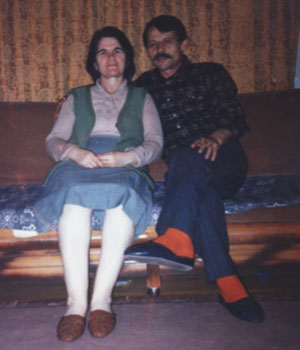 |
The
Boyadji family migrated to Smyrna around the 1860s from Plovdiv
in present day Bulgaria. The family were Bulgarian-speaking Orthodox
Christians. Some members of family continued to live in Plovdiv. The
eldest members of the family, I know, who are my great-grandparents,
were Sofiya Boyadji and Gavril Boyadji, who were married. Gavril’s parents,
Kiaska and Stefan, escaped Plovdiv as tensions between ethic Bulgarians
and Turks in the second half of the 19th century was high.
This was a time of great fear for various communities and indeed in
the 1870s a massacre was realized in Batak region against Bulgars, after
their arrival to the relative safety of Smyrna.
Sofiya Boyadji’s parents had migrated from Istanbul before her birth and so Sofiya was born in Izmir around the first decade of the 20th century, but now lives in Bulgaria. They migrated back to Bulgaria around the 1970s. They had five children: Evdokiya, Hristo, Aleko, Ansa, and Kalina. Aleko Boyadji is now living in Istanbul and is married to a Greek lady, Katerina Paltas. Evdokiya Boyadji, my grandmother born in Izmir 1938, married a Pomak [Bulgarian speaking Muslim], Kadir Eser. When Gavril Boyadji came to Smyrna, they established a madder [a local plant root from which a red dye used to be extracted] workshop, a business maintained until the 1940s and a house in Paralelli (the Second Kordon). Later, they bought building plots in Boudjah and they also built a house there.
One of Sofiya Boyadji’s sister’s name was Anna who married a Smyrna Greek by the name of something like Vasili Vasilyadi, who left with the city with his kinsmen in 1922, after which no news or contact has ever been received.
Sofiya Boyadji’s parents had migrated from Istanbul before her birth and so Sofiya was born in Izmir around the first decade of the 20th century, but now lives in Bulgaria. They migrated back to Bulgaria around the 1970s. They had five children: Evdokiya, Hristo, Aleko, Ansa, and Kalina. Aleko Boyadji is now living in Istanbul and is married to a Greek lady, Katerina Paltas. Evdokiya Boyadji, my grandmother born in Izmir 1938, married a Pomak [Bulgarian speaking Muslim], Kadir Eser. When Gavril Boyadji came to Smyrna, they established a madder [a local plant root from which a red dye used to be extracted] workshop, a business maintained until the 1940s and a house in Paralelli (the Second Kordon). Later, they bought building plots in Boudjah and they also built a house there.
One of Sofiya Boyadji’s sister’s name was Anna who married a Smyrna Greek by the name of something like Vasili Vasilyadi, who left with the city with his kinsmen in 1922, after which no news or contact has ever been received.
Sofiya
Boyadji remembers the house in which the French Levantine Balladour
family lived and also the residence of the Greek Vasili family that
today is the Özdeniz Kız Öğrenci Yurdu [girl’s
dormitory], a family to whom one of Sofiya’s sisters was married
to. The Vasili family were tobacco-traders and had commercial ties with
the Greek Papadimitrio family of Smyrna who were also renowned also
tobacco traders. There were approximately 800 Slavic-speakers in Smyrna
pre-1922. They had a church, Sveta Mariya, between the Fasoli district
and Frangomahala [Frank quarter]. She remembers the old names
of districts: Melantia (Karataş), Enopi (Göztepe), Mirakti
(Kokaryalı), Paradeiso (Kızılçullu), and Imerion (Gaziemir).
The Fasoli district no longer exists, burnt to the ground in the 1922
fire, and today is part of the Izmir International fair area.
Note: The location of the Balladour house as recalled by Mrs Eser contradicts that informed by the contributor Antoine Karakulak, shown here, but along the same street. There might have been more than one family house.
Note: The location of the Balladour house as recalled by Mrs Eser contradicts that informed by the contributor Antoine Karakulak, shown here, but along the same street. There might have been more than one family house.
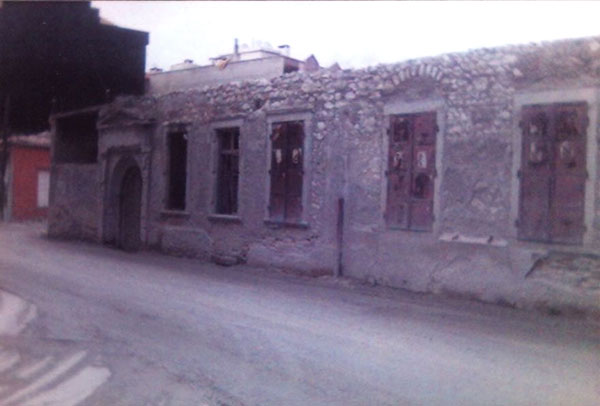 |
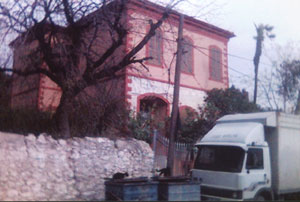 |
Sofiya
Boyadji remembers that some Greeks, who were married with the other
foreigners and Turks or foreign-passport holders, were not exposed to
the exchange of 1922. Catholicized or Protestantized Armenians could
survive in Smyrna after 1922. But, Gregorian Armenians left and their
district, Basmane, was burnt. She remembers the Surp Etienne Church
of the Armenians. The remnant Orthodox community practiced their religion
in Agios Ioannis Church in Buca in the 1930s and 40s, and in the 50s
the Dutch Chapel of Alsancak or
the Anglican Church of Buca. These
practices were ended in the latter place in the 1960s with its closure.
Until 1922, some Armenians were practising their religion in the Agios Voukolos Church and these Armenians were called as ‘Hayhurum’
(Hayk-Rum or Armeno-Greeks). Until 1922, there were Armenian and Greek
members in the Chamber of Commerce in Smyrna and even the chief of this
institution was an Ottoman Armenian, Mesrob Simonyan. The prominent
trading Levantine families were Whitall, Giraud, and Aliotti as she
remembers. Like the Giraud family, many members of these Levantine families
were married with the Greeks.
The
Turkish Army, which entered the city of Izmir on the 9th of September
1922, were undisciplined. She remembers a Turkish soldier wanted ‘tavuk’
[chicken] from her and their popular song was ‘Allı Gelin,
Telli Gelin’ [decorated bride]. These soldiers had tendencies
to molest. She was educated in the Evangeliki Smyrnis and American
College of Paradeiso and she remembers Ms. Mimie, who was the director
of the College. In the first years of the Republic, there were French,
Italian, American, and Jewish schools and there were the San Antonio
Italian Hospital, the French Hospital (both in Alsancak) and the Karataş
Hospital for Jews.
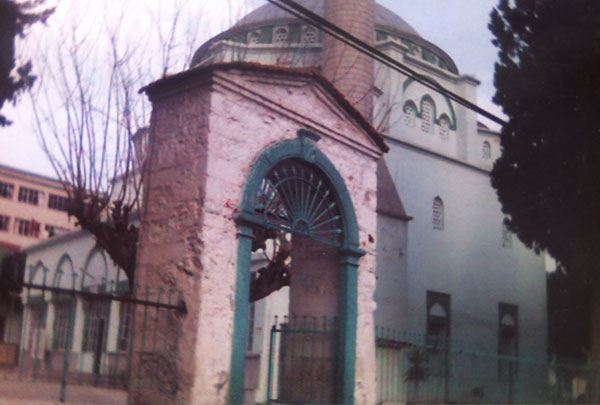 |
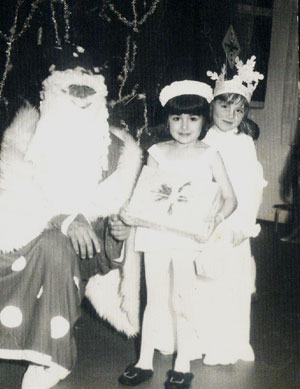 |
The
Boyadji family had farms around Vourla (Urla), which was also a place
of recreation. They used the names of Scala Nuovo and Krini respectively
for places known today as Kuşadası and Çeşme respectively.
The nearest Orthodox-Slavic community to Smyrna was in Panormos (Bandırma)
on the coast of the Marmara Sea. She remembers that all the Slavic-speaking
families also spoke Greek in Boudjah. Probably, the Svoboda family has
Bulgarian or Russian origins, while Sandreczki was Polish.
There were separate British, French, Dutch, and Italian chambers of commerce in Smyrna. Some Greeks were active in these chambers. Xenopoulos was active in the French chamber, whereas Papadimitiou and Diamantides were active in the British one. In the first decade of the 20th century, Haci Davud Farkoh, who had a major house in Boudjah, was the chairman of the Chamber of Commerce of Smyrna until the mid-1910s. The Farkoh family were Syriac Orthodox, but Davud Farkoh also had American citizenship. Thanks to this connection, he remained chairman for a long time. It is certain that he was not living in Smyrna after the fire, and most probably migrated to America before the fire. From 1919 to 1922, Mesrop Simonyan [Armenian] continued this duty. Mesrop Simonyan, Misak Morakyan [Armenian], Eusthatios Iliadis, Xenophon Mpodoroglou [both Greek], Bohor Benevada [Jewish], Eliezer Gifre [Guiffray – French Levantine], Hristaki Atnasole, and Diogenes Kasapoglou [both Greek] were the active non-Muslim members of the chamber until 1922.
Sofiya Boyadji remembers that the Levantine, Albert Whittall was living in the Forbes house in Boudjah in the 1940s.
There were separate British, French, Dutch, and Italian chambers of commerce in Smyrna. Some Greeks were active in these chambers. Xenopoulos was active in the French chamber, whereas Papadimitiou and Diamantides were active in the British one. In the first decade of the 20th century, Haci Davud Farkoh, who had a major house in Boudjah, was the chairman of the Chamber of Commerce of Smyrna until the mid-1910s. The Farkoh family were Syriac Orthodox, but Davud Farkoh also had American citizenship. Thanks to this connection, he remained chairman for a long time. It is certain that he was not living in Smyrna after the fire, and most probably migrated to America before the fire. From 1919 to 1922, Mesrop Simonyan [Armenian] continued this duty. Mesrop Simonyan, Misak Morakyan [Armenian], Eusthatios Iliadis, Xenophon Mpodoroglou [both Greek], Bohor Benevada [Jewish], Eliezer Gifre [Guiffray – French Levantine], Hristaki Atnasole, and Diogenes Kasapoglou [both Greek] were the active non-Muslim members of the chamber until 1922.
Sofiya Boyadji remembers that the Levantine, Albert Whittall was living in the Forbes house in Boudjah in the 1940s.
There
were two prominent Greek schools in Smyrna: Evangelical
School or Evangeliki Smyrnis, which practised mixed education and
the Homerian School for Girls (now Atatürk Lisesi) - further info. Some Orthodox churches were not destroyed by the
fire of September 1922: Agioi Pavlos kai Petros was in Darağaç,
the northern part of Punta (Alsancak), Agios Voukolos in Kapılar,
a district somewhere between Kemer and Basmane, Agios Ioannis in Boudjah,
Agios Ioannis in İkiçeşmelik district, Pantelemion Church
in Enopi, today’s Göztepe, Profiti Ilias in Yeşildere [St.
Anne’s] valley and Bornova Orthodox Church, where Kars Okulu [school]
now stands. Apart from Agios Voukolos and Profiti Ilias churches, all
churches were demolished in the early period of the Republic. Until
the 1922 fire, the greatest church of the Armenians was Surp Stepanos
in the Basmane district. Armenians also had two important schools: Surp
Mesrop Boarding School for Boys and Surp Hripsime School for Girls.
All Armenian schools were in the
Basmane district.
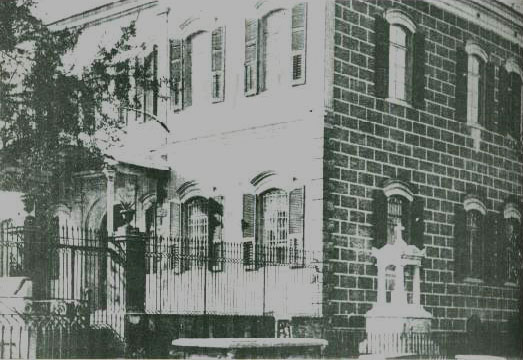 |
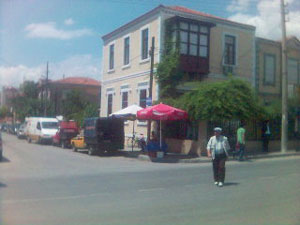 |
The
Mekhitarist
Fathers, which were based in Venice, also had a Catholic school
in Basmane district. Some Armenians were proselytized in this school.
There were many theatres pre-1922 period such as Theatre de Smyrne, Theatre des Quais, Alhambria, and
the Gardens of Eden. The Armenians had a newspaper in Smyrna: Arevelian
Mamul (Eastern Press), printed in the Armenian alphabet. Lyuboslavie
was the Bulgarian newspaper of the city. The Greeks also had many newspapers.
The Boyadjis had two house in 1920s, first one was in Paralelli and the other one was in Boudjah. They were in their house in Paralelli during the 1922 events and later they had to sell this house in the 1920s for the reconstruction of Izmir following the destruction wrought by the fire.
Some members of the Boyadji family had already migrated to the USA and Canada before the 1940s and after this date migration continued towards Istanbul and later to Bulgaria. There were Boyadji graveyards in an Orthodox cemetery in Kemer [Caravan Bridge], which was expropriated in the early years of Republic. There are Boyadji family graves in Bulgaria and possibly in Istanbul.
The Boyadjis had two house in 1920s, first one was in Paralelli and the other one was in Boudjah. They were in their house in Paralelli during the 1922 events and later they had to sell this house in the 1920s for the reconstruction of Izmir following the destruction wrought by the fire.
Some members of the Boyadji family had already migrated to the USA and Canada before the 1940s and after this date migration continued towards Istanbul and later to Bulgaria. There were Boyadji graveyards in an Orthodox cemetery in Kemer [Caravan Bridge], which was expropriated in the early years of Republic. There are Boyadji family graves in Bulgaria and possibly in Istanbul.
There was a vivid Orthodox tradition in Smyrna till 1922. The relatives of the deceased would rent a person, who would cry and lament during the burial ceremony. Generally men were burying the dead. The face of dead was left open and there was no glass protecting the dead body. In accordance with the Orthodox tradition, the deceased would be dressed in her most beautiful garments, and her money and beloved objects were also placed in the coffin. After burial, the grave would then been covered with gorses and blackthorns for forty days. My grandmother asserts that this was for the prevention of the spread of contagious diseases or hindrance of the exhumation of the dead by wild dogs, a reason for this practice to be particularly widespread in small towns/villages, such as Boudjah and Bournova.
The state orphanages hosted a considerable number of Orthodox children in the post-1922 period. Most of the girls, which were brought up in these orphanages, preferred or were encouraged to marry with Muslims. For example, in the 1940s, one of the Bulgarian girls, Hristina, daughter of Ana, got married to a Muslim policeman. A decade later, another girl, Silviya, preferred to marry a Muslim and was renamed Sevdiye.
The state orphanages hosted a considerable number of Orthodox children in the post-1922 period. Most of the girls, which were brought up in these orphanages, preferred or were encouraged to marry with Muslims. For example, in the 1940s, one of the Bulgarian girls, Hristina, daughter of Ana, got married to a Muslim policeman. A decade later, another girl, Silviya, preferred to marry a Muslim and was renamed Sevdiye.
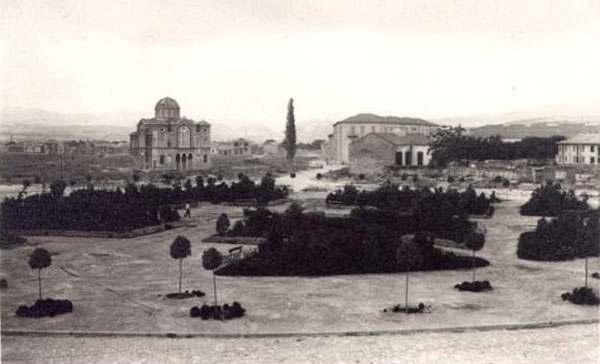 |
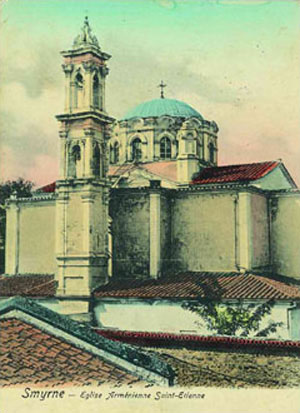 |
There was a powerful stateist tendency in commerce at the end of the 1920s. The final blow to the non-Muslim bourgeoisie were state restrictions directed to the community during the Great Depression (1929) and Capital Wealth Tax in 1942 in Smyrna. In the 1940s, under the harsh term of this ‘Varlık tax’ the state confiscated the properties of non-Muslims who could not pay their debts. Boyadji says that especially the Jews, as the most populous non-Muslim community in Smyrna, were the principal target of this taxation. She maintains that even though some people attempted to escape with their money to the mountainous regions or abroad, they realized that there was no end in this flight.
Most of the residents of Boudjah was either Greek or Armenian. In Smyrna, the Orthodox Bulgarians were a small community. Most of them were engaged in commerce and small-scale manufacture. According to G. Sotiriadis, there were about 415 Bulgarians in Smyrna. This number is a bit smaller than Boyadji’s number. There was also a smaller Serbian community.
Most of the residents of Boudjah was either Greek or Armenian. In Smyrna, the Orthodox Bulgarians were a small community. Most of them were engaged in commerce and small-scale manufacture. According to G. Sotiriadis, there were about 415 Bulgarians in Smyrna. This number is a bit smaller than Boyadji’s number. There was also a smaller Serbian community.
Despite the fact that ‘La Grande Eglise Armenienne’ is written in the third picture, this is apparently not the grand church of Armenians, i.e, Surp Stepanos. It can be an earlier construction of it but most likely it can be Surp Giragos Church, the second biggest Armenian Church of the city. Or it wasn’t in Smyrna at all, in fact another postcard (click image on the right to view this postcard) marks it as an Orthodox church in Manisa, so the picture gets more confused.
Note: Consulting with the local postcard collector and historian Orlando Carlo Calumeno on the nature of this building revealed more questions than answers. It is definitely not the ‘grand church’ Surp Stepanos, but because so few of the former Armenian churches are recorded in photographs, it could be any of the following: Surp Krikor Lusavoric within the hospital complex within the Armenian quarter of Smyrna, or the same named church in another part of the city belonging to the Armenian Catholics (Mikhitarists), or the Gregorian Surp Harutyun in some part of the city, or any in the city outskirts then of Surp Hac Church in Bornova, Surp Garabed Church in Karataş, Surp Asdvadzadzin Church in Karşıyaka, Surp Hokekalust or the Surp Yerrortutyun Churches in Göztepe, Surp Takavor Church in Bayraklı. Finally the ‘Smyrne’ designation written by the editor of the postcard doesn’t preclude the possibility this church is from one of the market towns near this city, such as Ödemiş that also had its Armenian Church, so like the term ‘grande’ could have been used to impress the buyers! So possibly this church was in one of the suburban areas, but not sure.
Note: Consulting with the local postcard collector and historian Orlando Carlo Calumeno on the nature of this building revealed more questions than answers. It is definitely not the ‘grand church’ Surp Stepanos, but because so few of the former Armenian churches are recorded in photographs, it could be any of the following: Surp Krikor Lusavoric within the hospital complex within the Armenian quarter of Smyrna, or the same named church in another part of the city belonging to the Armenian Catholics (Mikhitarists), or the Gregorian Surp Harutyun in some part of the city, or any in the city outskirts then of Surp Hac Church in Bornova, Surp Garabed Church in Karataş, Surp Asdvadzadzin Church in Karşıyaka, Surp Hokekalust or the Surp Yerrortutyun Churches in Göztepe, Surp Takavor Church in Bayraklı. Finally the ‘Smyrne’ designation written by the editor of the postcard doesn’t preclude the possibility this church is from one of the market towns near this city, such as Ödemiş that also had its Armenian Church, so like the term ‘grande’ could have been used to impress the buyers! So possibly this church was in one of the suburban areas, but not sure.
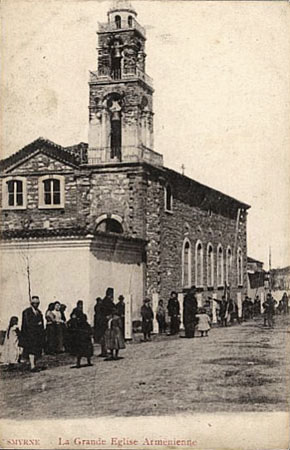 |
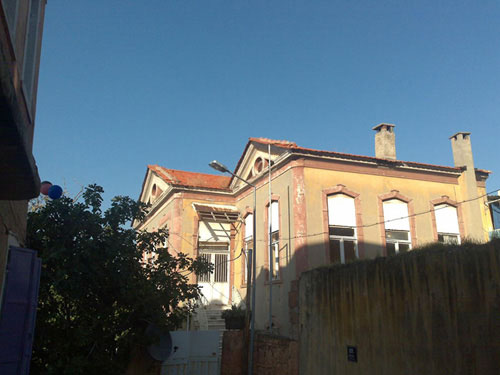 |
The photo opposite are remains of the Agios Ioannis Theologos church complex. It is not in Kemeraltı district but İkiçeşmelik district - İkiçeşmelik is to the east of Kemeraltı. In this area, there was a gorgeous Orthodox church in the early republican years, but it was destroyed in order to build a school. Therefore, this is the church, which Ms. Boyadji mentioned in 2006. When I spoke with the locals recently (2009), they claimed that the church stood in the place of the school (İsmet Paşa Primary School) and this remnant building was the mansion of priests. When I saw the cross-shaped ornaments (click image to view further photos), I thought that this remaining building could have been the priests’ mansion or religious school.
Note: Mr Ümit Eser continues his research on his family background and welcomes contacts to help with his endeavour through umiteser[at]su.sabanciuniv.edu
